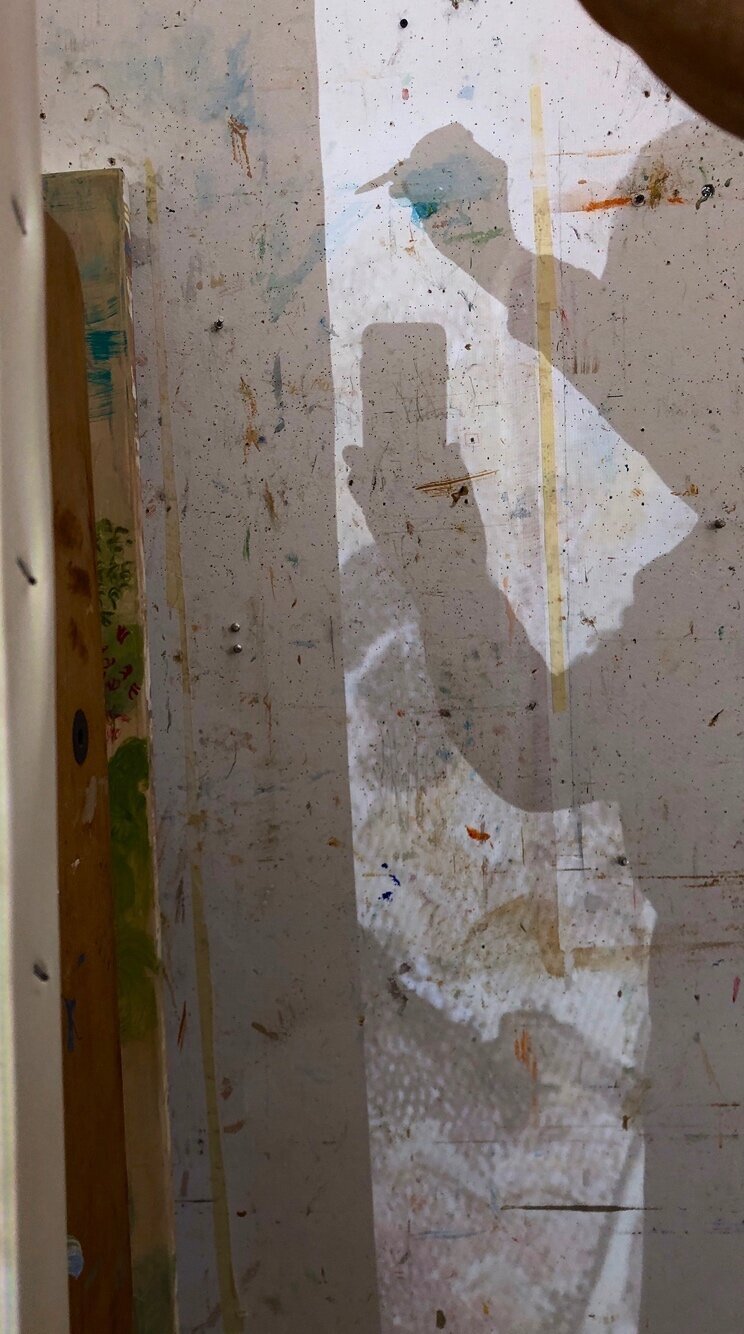2:50pm: end of my work day, time for our walk up north crestone creek. current state of best left unsaid 9 below (DETAIL) stay tuned tomorrow for the next installment of this new painting in the best left unsaid series, based upon photos i shot at MOMA in 2008.
6pm: back from our walk. check out the iphone photo below on the right, which i took just a few hours ago: icicles on branches over the creek, presaging approaching winter weather, night time temps in the 20's. i'm going to try and take advantage of warmer weather on thursday to paint plain air at north crestone creek, possibly for the last time until spring.
puzzle of the day: why were magnificent portraits such as the ones on the right found buried in the sand thousands of years after they were created? who made them? where were they found? where can i see them? answers later (unless you already know the answer).
6pm, the answer:
two thousand years before picasso, artists of greek decent in egypt painted some of the most arresting portraits in the history of art, known as fayum portraits for the area in egypt where they were discovered. they were part of the tradition of portraiture in ancient greece. no examples of this work have survived, other than what we know in mosaics. when they left greece for egypt, their talents were used in painting portraits of egyptians in encaustic, which were hung on the walls of egyptian homes until the subjects died, at which point the corners of the wood panels were quickly sawed off to fit the traditional egyptian mummy caskets, and buried in the warm dry sand, which preserved them for centuries until they were discovered in the late 19th c. this tradition continued unbroken into the early, portrait-like byzantine icons, transitioning into the more stylized portable icons of saints. examples of fayum portraits can be found in many of the world’s major museums: the met in nyc, the louvre in paris, the british museum in london to name just a few. to date, over 900 of them have been found.
2:07pm, latest update: current state of best left unsaid 9 below, with a detail on the left.
to view the entire best left unsaid series, click on the link below.
1:08pm: latest update: below are pics of the current state of the painting; right: the full canvas, left: detail of upper left. while eating a delicious omlette, i read the following in tao, by rawson & legeza: "the life of each sage is like the turning of heaven; his death is the transformation common to all things. he takes no initiative to produce either happiness or disaster; he responds to each influence, and moves as he feel pressure, acting when he must. he discards conventional wisdom and all memories of the past, following harmoniously the lines of heaven. his life is a floating, his death a resting."
yesterday afternoon we took a short walk near our house. it seemed a bit too cold to go up to north crestone trail. as the sun set, the fresh snow on the peaks turned pinkish red.
today i'm starting a new painting: best left unsaid 9. pics later today.
11:17 am: my palette and brushes , below right, just before launching into the painting. on row 2, the canvas with the drawing next to the photo i'll be working from.
11:42am update: right: at work on the painting. time for a brunch break? what am i listening to? schubert's string quartet D956 performed by rostropovich
11:50: yeah, i think it's time for some eggs. working on this painting is like eating a masterfully prepared desert.











